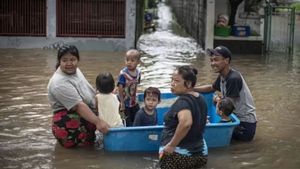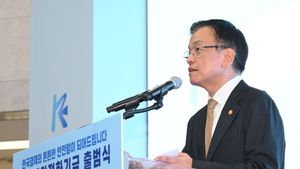JAKARTA - The European Union has agreed to impose a gender quota, to ensure women have at least 40 percent of the seats on the boards of large companies.
After a decade of stalemate on the topic, the proposal gained new momentum this year with renewed support from Germany and France, and a political agreement was finally reached on Tuesday between the European Parliament and the Council of the European Union.
The law requires companies registered in the 27 EU member states to require women to take up at least 40 percent of non-executive board seats or 33 percent of all board director roles by mid-2026.
Companies can be fined for failing to hire enough women on their boards, and directors' appointments canceled for non-compliance with the law.
"Diversity is not just a matter of equity. It also drives growth and innovation. The business case for having more women in leadership is clear," European Commission President Ursula von der Leyen said in a statement, quoted by Euronews June 9.
"There are a lot of women who qualify for the top jobs, they should be able to get them."

Last year, EU data showed women occupied 30.6 percent of boardroom positions across the bloc, but this varies widely from country to country, with Cyprus having 8.5 percent women on the board and France more than 45 percent.
France first introduced quotas for women on the council in 2011. Its own 40 percent quota went into effect in 2017 and it's the only European Union country to exceed that number today, according to the European Institute for Gender Equality (EIGE).
Meanwhile, Italy, the Netherlands, Sweden, Belgium and Germany were the next best in the class, with between 36 and 38.8 per cent of women in the Dewab. Lagging far behind are Hungary, Estonia and Cyprus, where less than one in 10 non-executive directors are women.
The EIGE said in April that binding quotas had proven more effective in bringing more women to the board, compared to countries that had taken more lenient or no action.
It is known that the so-called 'Women on Boards' directive applies to companies with at least 250 employees.
It aims to introduce transparent recruitment procedures within companies, so that at least 40 percent of non-executive director positions, or 33 percent of executive and non-executive roles combined, are occupied by the underrepresented gender, generally women.
In cases where candidates are equally qualified for an office, priority should be given to candidates of the underrepresented sex.

Registered companies will be required to provide information to the competent authorities annually, about gender representation on their boards. If these conditions have not been met, how do they plan to achieve them.
"More women on the board make the company more resilient, more innovative, and will help change the top-down structure in the workplace," the directive's co-rapporteur, MEP Austrian Social Democrat Evelyn Regner, said in a statement.
"The selection process should be based on clear and predetermined criteria and with this agreement, only the best candidates will be selected. This improves the overall quality of the board."
Regarding this provision, member states need to amend the directive into their own national laws, within the next two years.
Companies, for their part, must meet the new target by June 30, 2026. This is a tighter deadline, than the Board's proposal on December 31, 2027.
The EU's proposal includes effective, deterrent and proportionate penalties for companies that fail to comply with selection and reporting obligations. This can include fines and cancellation of contested promises.
In addition, member countries must also publish information about companies that achieve targets, as a form of peer pressure and to encourage compliance.
The European Parliament has demanded an assessment of the scope of the directive at a later stage, on whether it should also cover unlisted companies.
The English, Chinese, Japanese, Arabic, and French versions are automatically generated by the AI. So there may still be inaccuracies in translating, please always see Indonesian as our main language. (system supported by DigitalSiber.id)













